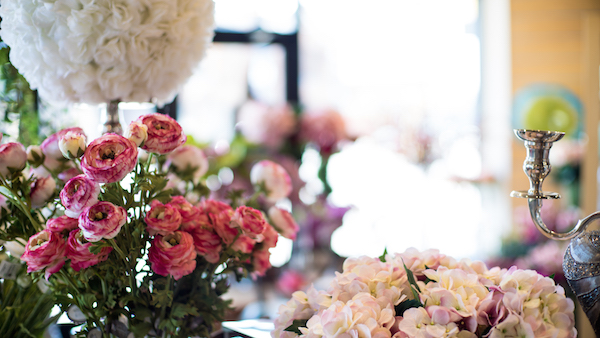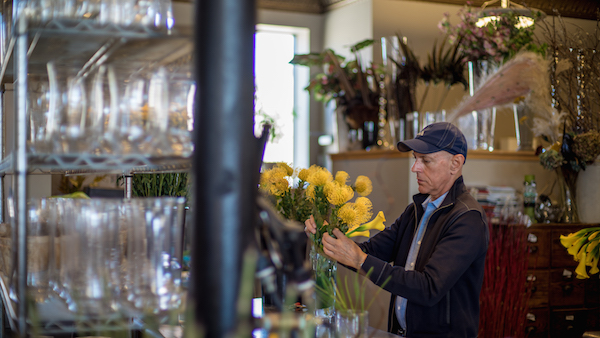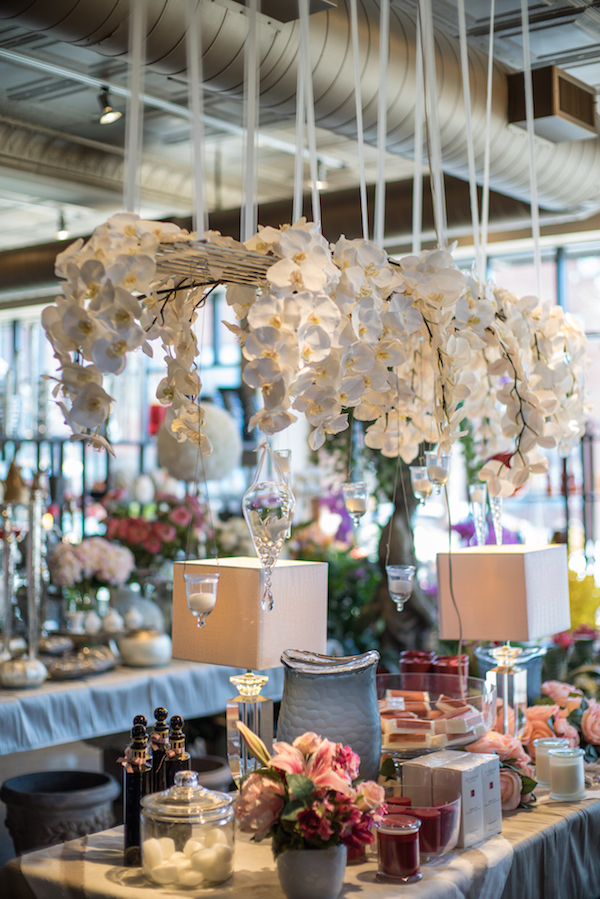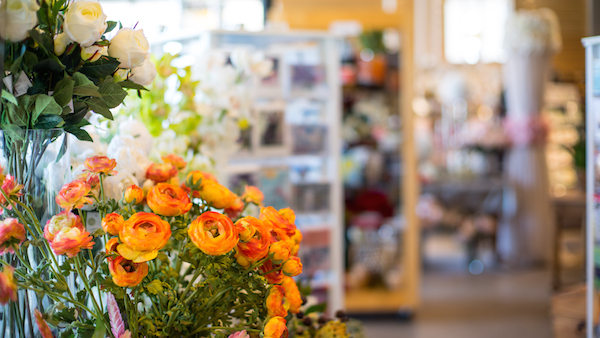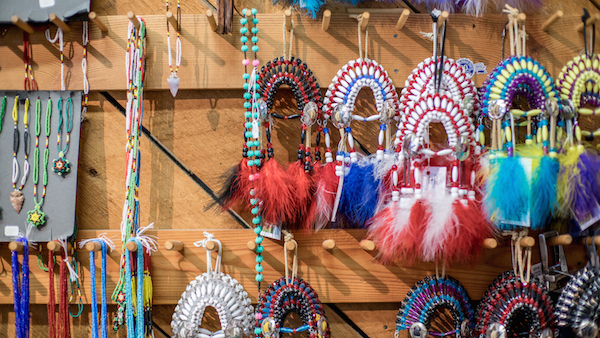
Words by staff writer, Morgan Mercer // Photos by Marie Ketring
It’s midafternoon and Minneapolis’ Franklin Avenue is bustling. This stretch of the street — starting at the Minneapolis American Indian Center — marks the heart of the city’s urban American Indian community. Coffee shop bulletin boards nod to the area’s history as the birthplace of the American Indian Movement and a hotbed of civil rights, citizen action, and social activity. As the landscape of neighborhoods change over time, so too has Franklin Avenue. Nonprofits, churches, restaurants, galleries, gift shops, and even a local bakery now make up the neighborhood complex.
Welcome to the American Indian Cultural Corridor.
For the past few years, the community has worked to develop a new vision for Franklin Avenue — one that would re-brand the historic neighborhood as a national destination where locals and tourists of all ethnicities and backgrounds could visit to enjoy American Indian food, art, and culture. While it’s a vision that can’t be realized overnight, community leaders make progress every day. We took a tour down the street to chat with business owners, gallery directors, and managers about what kind of community they want to create in the neighborhood, and what they’re most excited about right now.

Two Rivers Gallery
Website // 1530 E. Franklin Ave.
After an eight-year hiatus, Two Rivers Gallery is set to reopen on May 15, and they have their sights set on becoming the neighborhood’s arts and culture hub. The gallery will focus on showing work from local, emerging Native artists. The opening show and silent auction will feature work from the gallery’s permanent collection.
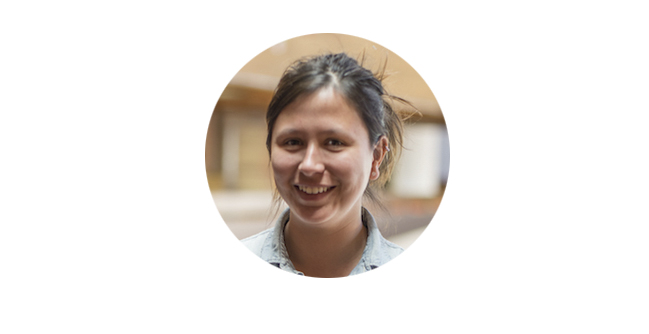
Maggie Thompson, Gallery Director
What kind of community are you trying to build here?
“A collaborative community. Working together, creating relationships, and making this place inviting is the biggest thing for the Native community, but also for outside members from all over the Twin Cities and nationally. Making this a national landmark, a place where people can come when they visit Minnesota.”
What are you most excited about in this community?
“I’m newer to the community, but so far everyone I’ve met seems to be really enthusiastic. There’s a lot of momentum and that’s exciting. I see things changing over for the better. I think it’s an exciting time — bringing awareness to people outside the Native community with everything that’s happening with cultural appropriation and the [Washington] Redskins. I think it’s a really important time for our voices to be heard. I’ve noticed that happening more. I think that’s the most exciting.”
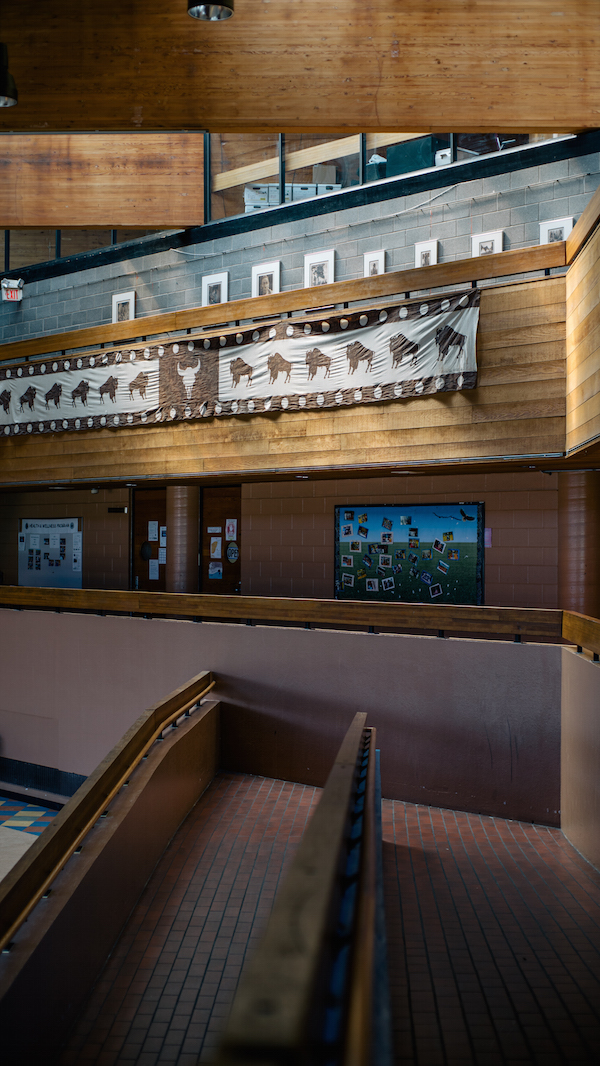
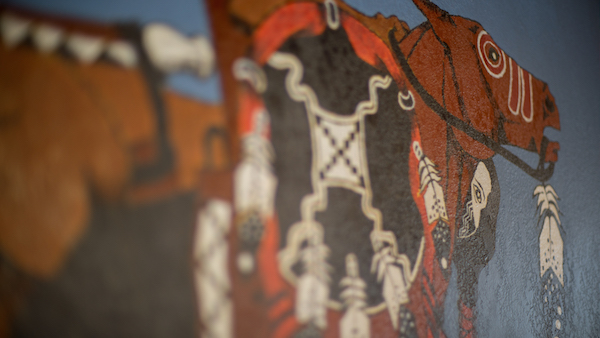
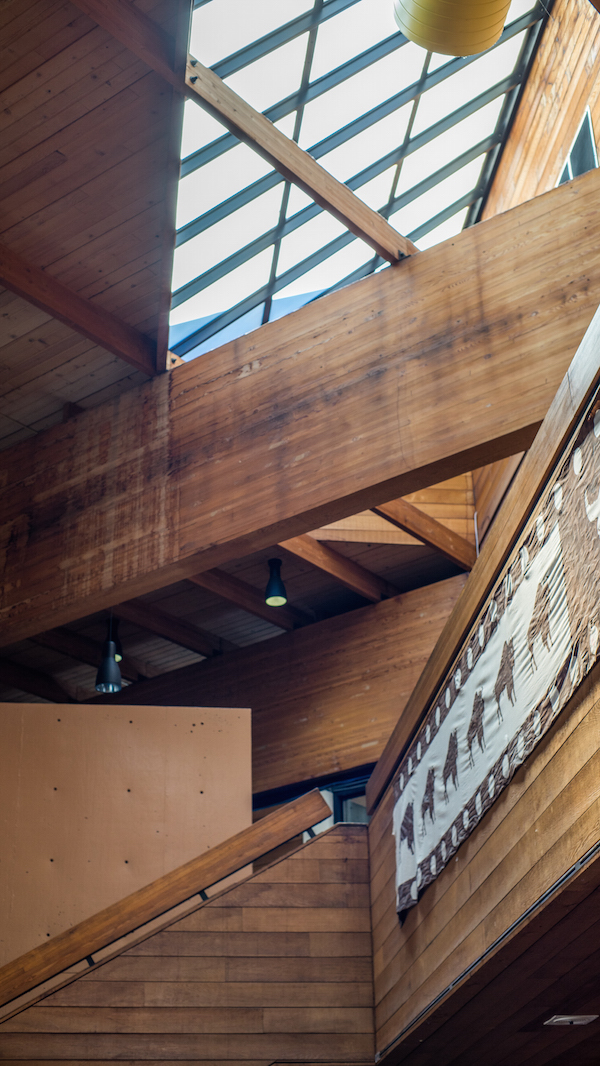
Woodland Indian Crafts
Website // 1530 E. Franklin Ave.
For 35 years Charlie Stately has stood behind the counter at Woodland Indian Crafts. He took over the store on the ground floor of the Minneapolis American Indian Center in his early 20s and has been a fixture in the building ever since — so much so that people often forget his shop isn’t named after him.
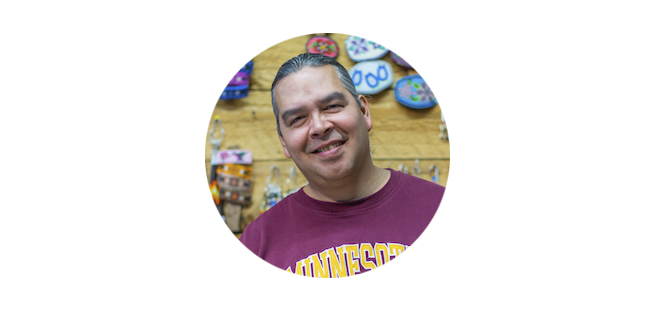
Charles Stately, Owner
What kind of community are you trying to build here?
“I think we’re trying to create the cultural corridor, which has been here a long time. It just hasn’t been formally named or cultivated.”
What are you most excited about in this community?
“I’m excited about the people that live here, the customers we serve, and the things we can do for the people we’re here to serve.”
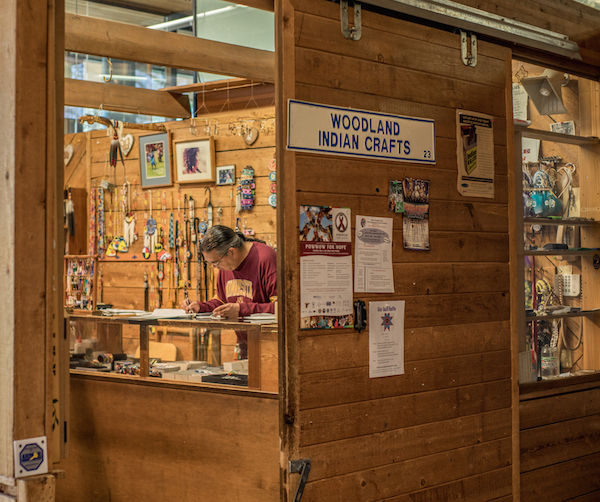

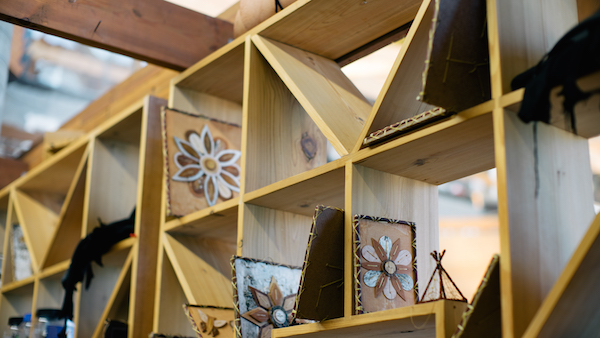
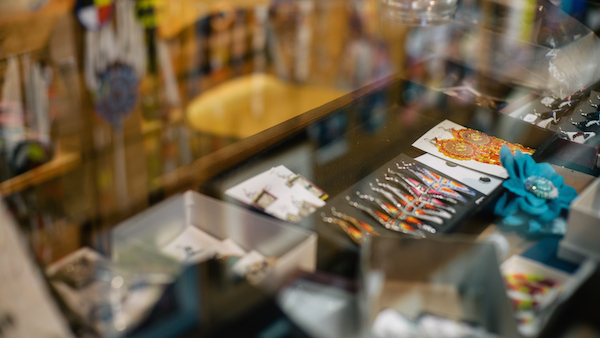
Pow Wow Grounds Coffee
Website // 1414 E. Franklin Ave.
Pow Wow Grounds Coffee is housed in the same bright yellow and brick building as the Native American Community Development Institute (NACDI) and All My Relations gallery. It’s a coffee shop where you pour your own cream straight from the carton, where there are board games to play and a bookshelf of free paperbacks to take and read, where signs to attend rallies to fight racism are pinned up and scattered about, and where you might feel the wet nose of a patron’s dog nudging up against your leg looking for table scraps.
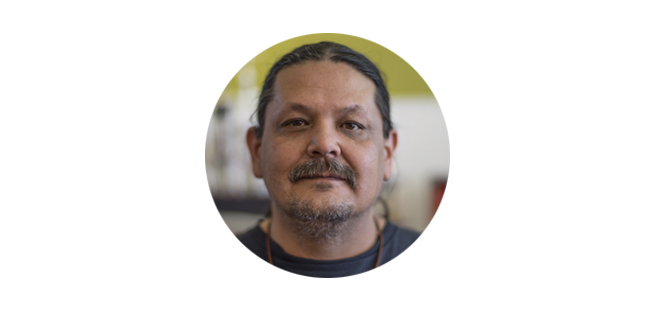
Alan Gross, Barista
What kind of community are you trying to build here?
“We’re trying to create Native-owned businesses and entities so we can turn around and help build confidence and infrastructure. We need to find all the avenues we can for businesses and work on leveling up our people. I had to come back to this street to get a job from this Native guy who owns a Native-run business. He’s the one that actually gave me a chance. We need to turn around and pick each other up, and I think that’s what the Native American cultural corridor [on Franklin] is going to do.”
What are you most excited about in this community?
“I’m most excited about all the people that come in here who we can talk to and who we can build bridges with between our cultures. What really sucks is there is a gap between our cultures. If we’re going to sit here and talk about something that’s difficult peoples’ shields come up. But the people that come in here, their shields are already down. It’s up to us to build those bridges between our cultures because all we need to do is keep talking. When you cut it down to brass tacks, all we need to do is get together, talk, and teach each other about stuff. I strongly believe we have things to learn from each other.”
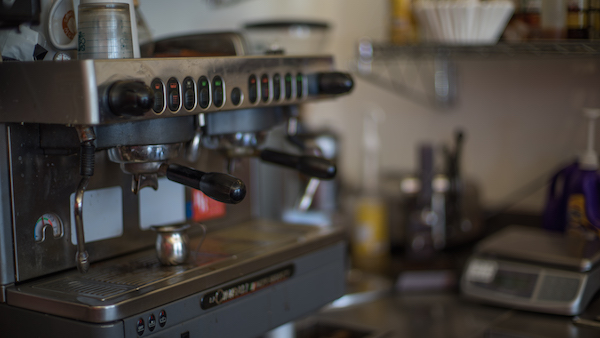
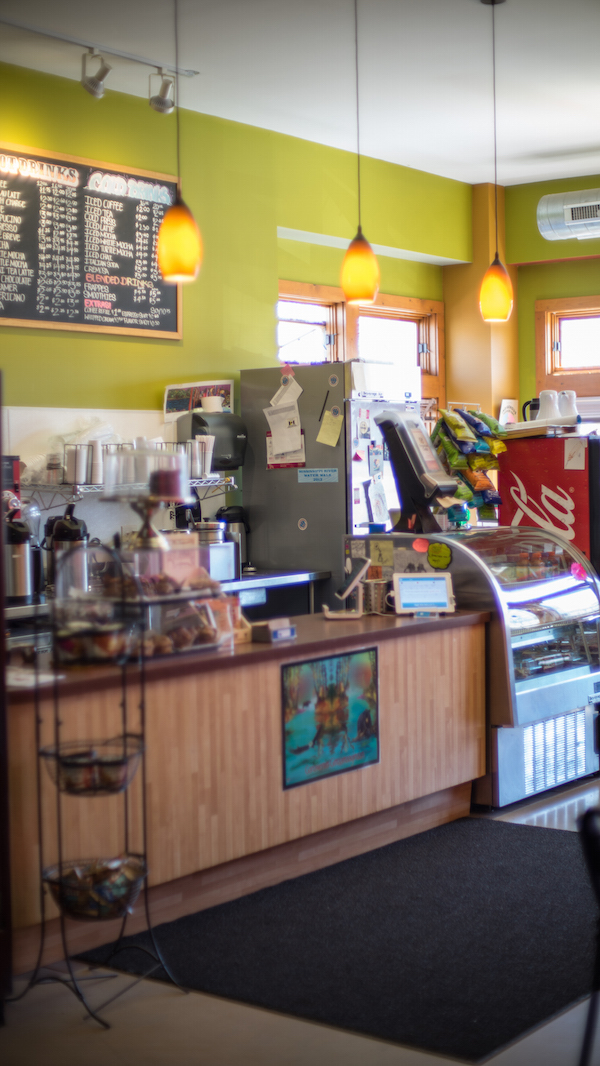
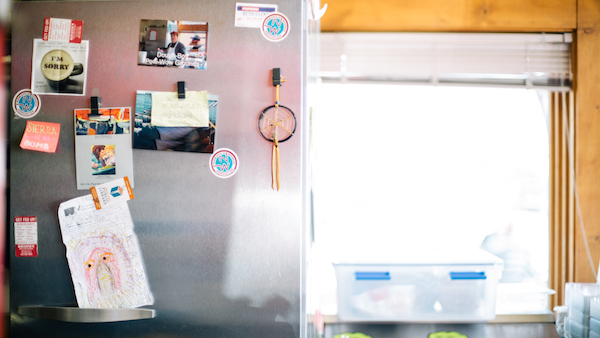
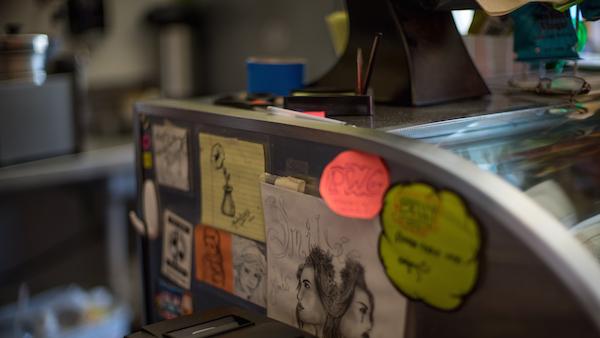
Franklin Library
Website // 1314 E.Franklin Ave.
From Pow Wow Grounds, walk up two sets of stairs and you’re standing in the main room of the Franklin Library. Soft light filters into the space from the frosted glass panels in the ceiling. Kids’ drawings cover the walls and columns. In addition to being listed on the National Register of Historic Places, the library’s other claim to fame is its resident corn snake that has made the main counter its home.
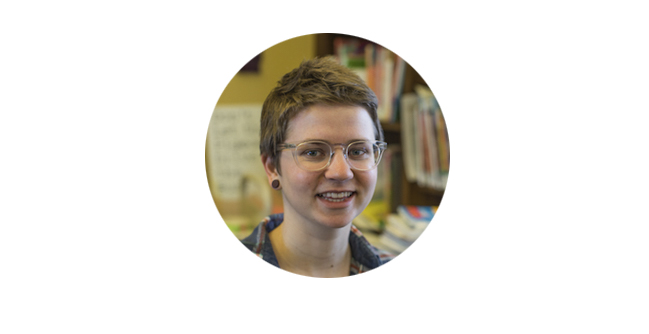
Cassie Warholm-Wohlenhaus, Librarian
What kind of community are you trying to build here?
“This is a community we’ve been an integral part of and have been building with for the last 100 years. What we really strive to do here is work with people who come into the library, but also go out in the community and build relations with local organizations. We really see the library as a trusted community gathering space for the residents here and for people who come to us. We have a huge Somali language collections, we’ve got local history collections, we’ve got an American Indian collection that dates back to the ’60s. We do a lot to develop the library in a way that reflects the community.”
What are you most excited about in this community?
“What I’m most excited about is seeing all the relationships and interactions that happen between people. We’re always packed to the gills and you see so much of the interaction that happens between residents, people who work here, and people who live here. That sense of community and sense of relationship of everybody being in this together, working through challenges, and working to find opportunities together in this community is really exciting to me. I think there’s just so much potential in this community.”
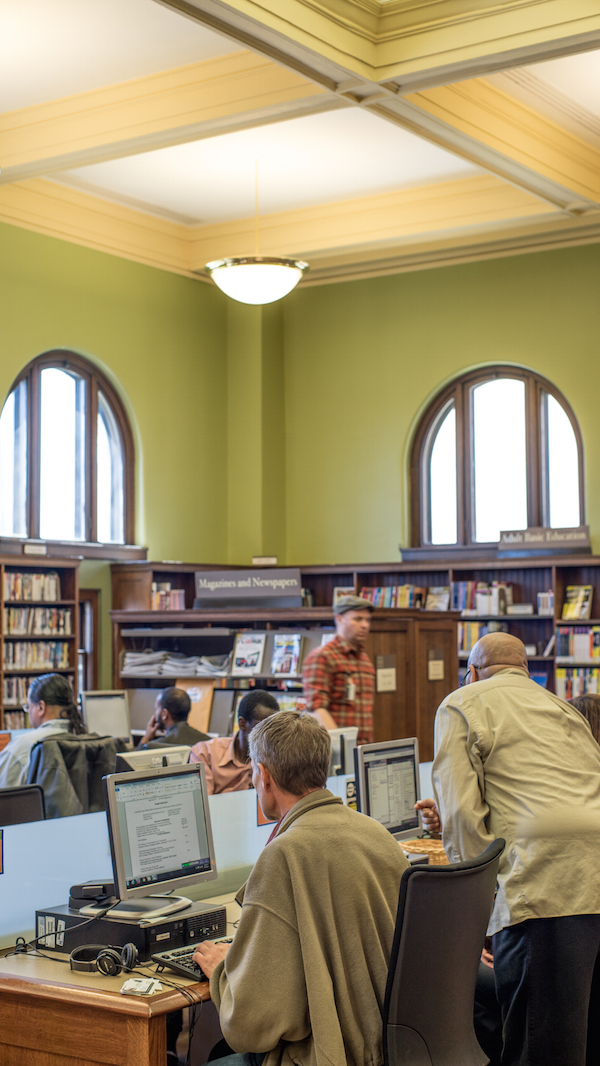
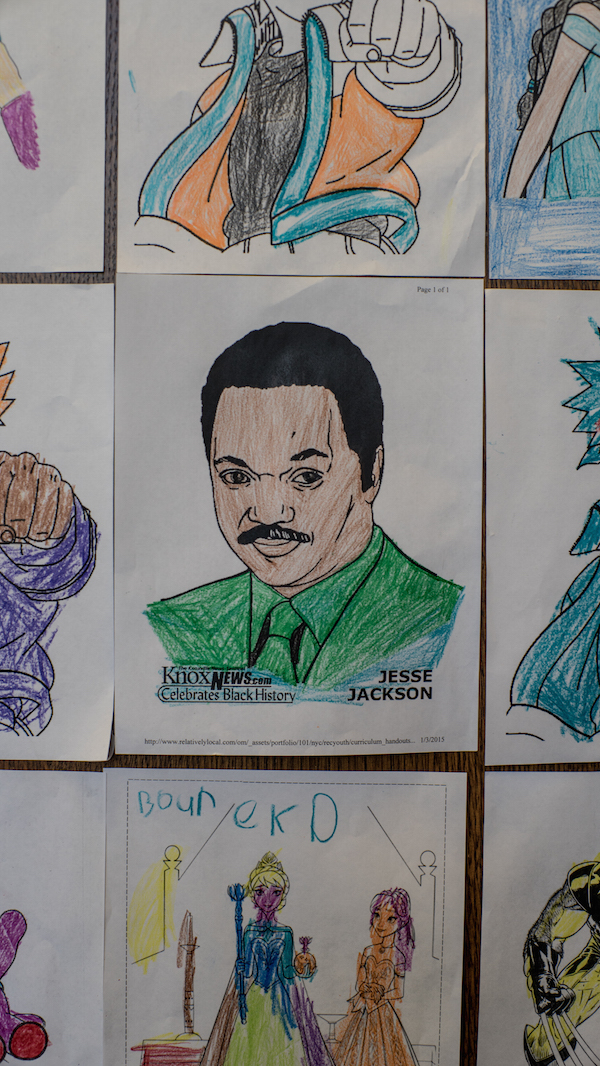
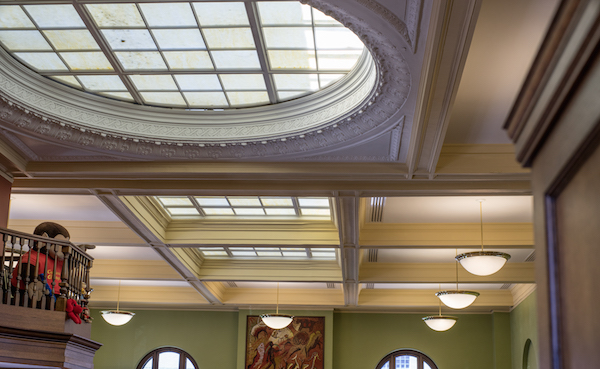
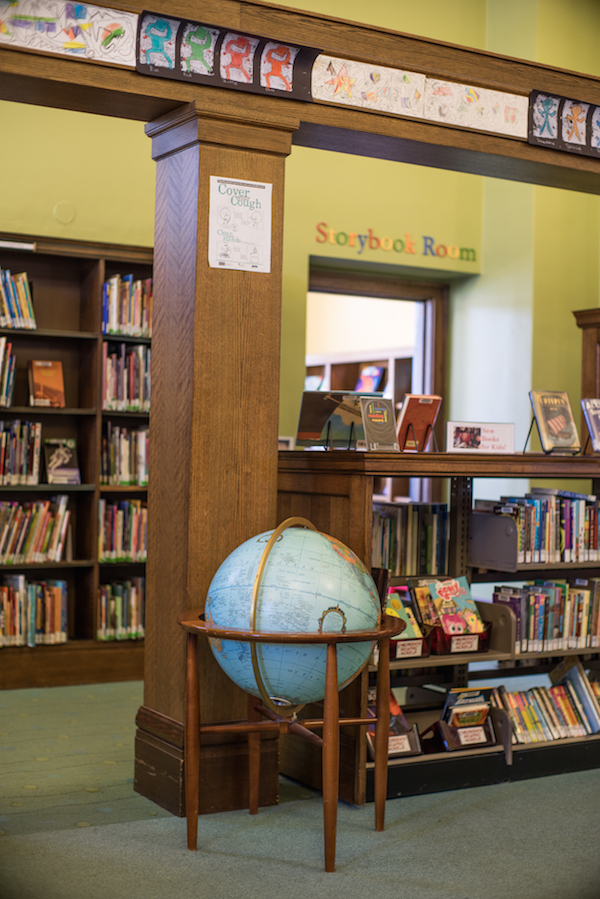
Northland Visions
Website // 1113 E. Franklin Ave.
When you walk through the door of Northland Visions you’re greeted by walls full of beads, wild rice, Pendleton bags, and a furry white shop dog named Connor who hugs the legs of co-owner Marilynn Bellanger wherever she goes. Marilynn started the business with her husband Ken nearly 15 years ago.
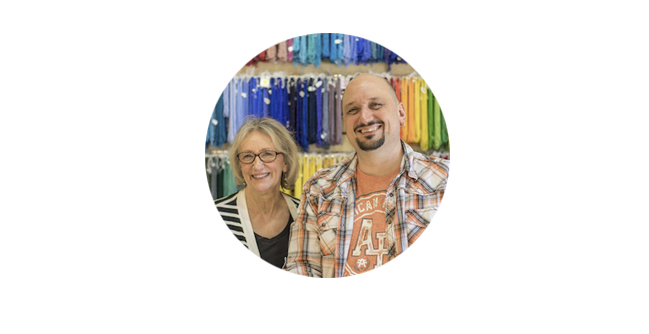
Marilynn Bellanger, Co-owner
What kind of community are you trying to build here?
“First we did the gift boxes at home — birch bark containers filled with Native products like wild rice, wild rice soup, wild berry jelly, syrup, and pancake mixes because it reflected foods of Minnesota that were indigenous. Over the years we’ve gone to major powwows, Native art shows, and become acquainted with a lot of different artists. What my husband really wanted to do was showcase the wide variety of Native art in this area. Typically when anyone thinks of Native art they think of turquoise jewelry, Navajo rugs, and pottery. They’re beautiful, but they’re southwest. We made it a point to try and get the majority of artists from this area.”
What are you most excited about in this community?
“The goal of NACDI to make Franklin Avenue the cultural corridor. I realize that’s going to be a long-term thing and it doesn’t happen overnight, but it’s exciting to bring new people to the area and to see the development of new businesses.”
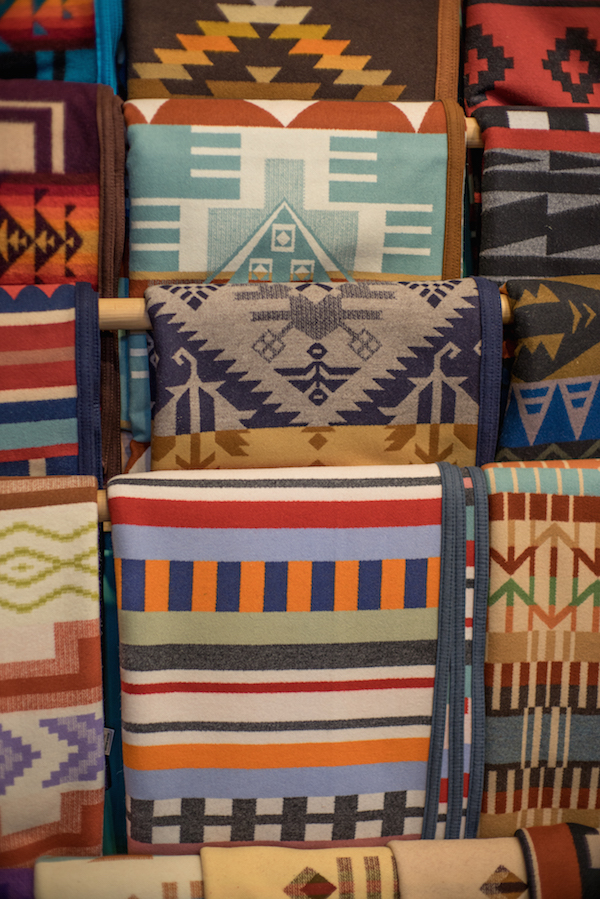
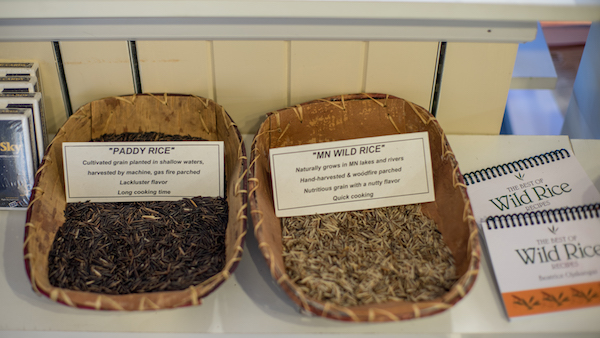
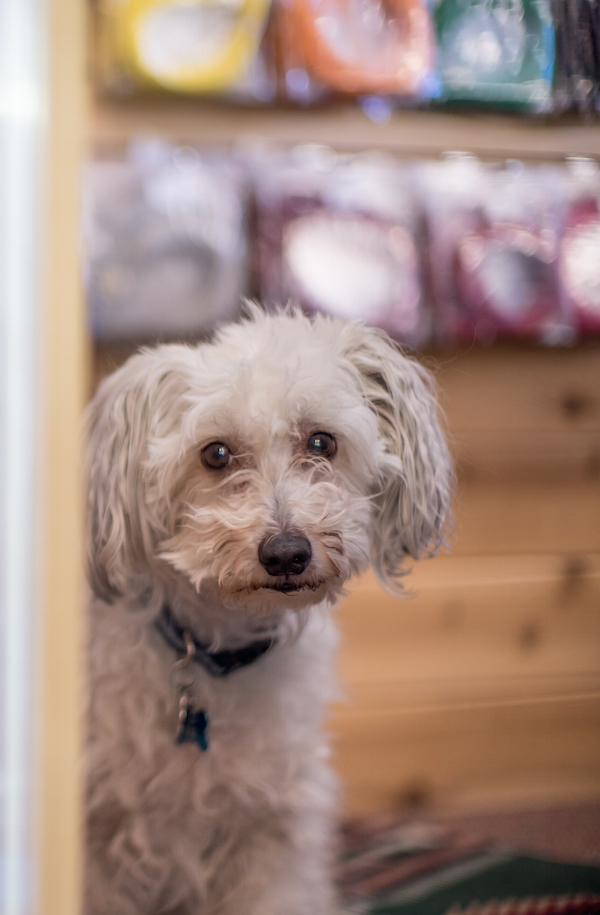
The Circle
Website // 1508 E. Franklin Ave.
Thirty five years of history fills The Circle‘s one-room office. Extra newspaper copies sit stacked on filing cabinets and along the walls. Like most community newspapers, The Circle aims to tell the story of the neighborhood through the most objective and independent lens possible, despite occasional pushback.
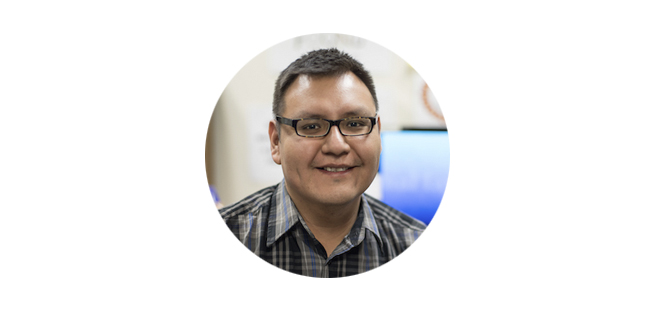
Alfred Walking Bull, Managing Editor
What kind of community are you trying to build here?
“We started as a newspaper out of the American Indian Center, and then in the ’90s separated to become a nonprofit community newspaper. The goal since that point has been to provide unbiased, accurate, and fair news coverage of the Native community here. One of the goals at that point was to try and separate ourselves out by saying, ‘We’re going to write the stories that are the news whether the advertisers like them or not.’ The Circle has been a paper of record for the community. Whatever the community is doing, we report on and we make note of it. We’re kind of like the living history of the Native community.”
What are you most excited about in this community?
“There’s always something going on. I think the progress the Native community has made over the last 40 years is remarkable — from a time when the police would harass, beat, and make life difficult for the Native community, to the point where now Indigenous People’s Day is celebrated by the city and, hopefully, soon by the state. I think there’s a tremendous opportunity for the urban community here to utilize their political or economic capital, go back to their reservations or tribal communities, and reinvigorate there. I think that’s something worth writing about.”
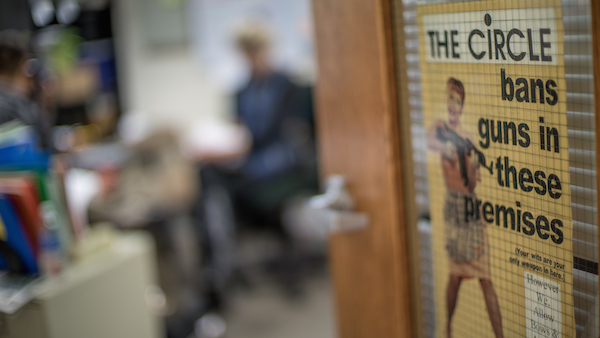
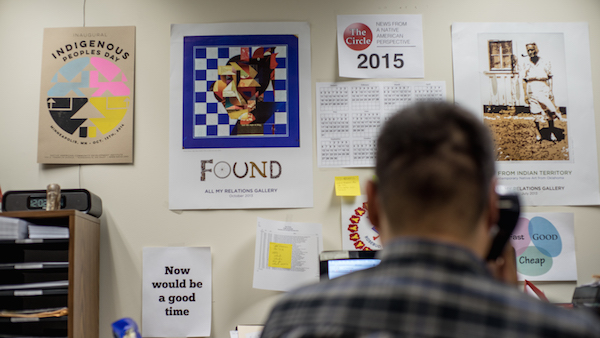
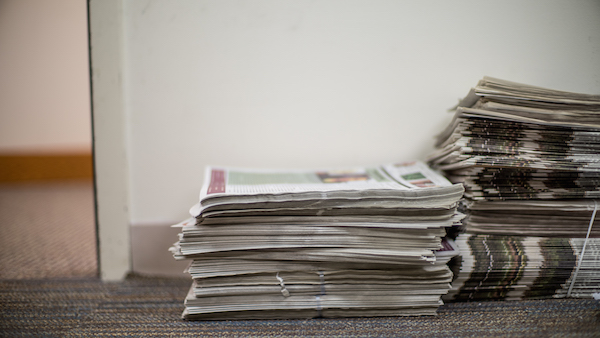
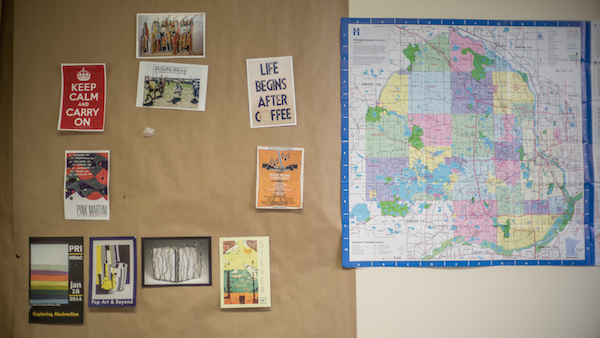
Maria’s Cafe
Website // 1113 E. Franklin Ave.
Maria’s is the kind of place where the staff knows your name. Its light and airy charm is punctuated by bright red chairs and tables. Pull up a stool at the counter or grab a table in any one of the three connected dining rooms. People from all walks of life settle in and get cozy here.
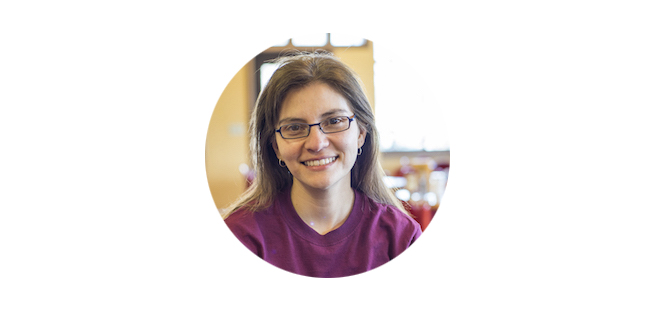
Monica Mesa, Manager
What kind of community are you trying to build here?
“Food brings people together. What I’ve experienced here is that a customer comes in and they become a regular. We get to know them, and they become your friend. I know this area was really rough at the beginning, but no matter what, this is a destination place. People come here from everywhere to eat. I’ve been here for 11 years and I’ve met many people that I run into downtown. I met them first when they were dating. They got married, they had kids, and now they’re pregnant again. I’ve seen the kids grow up. It’s crazy. You really bond with a lot of people here.”
What are you most excited about in this community?
“Diversity. I think the more people who come from different experiences and different parts of the world, the more open I feel to understand different feelings. Even though we’re different, we can come together. I’m thankful for the Somali and Native American communities here, and all the churches around. They really make us stronger.”
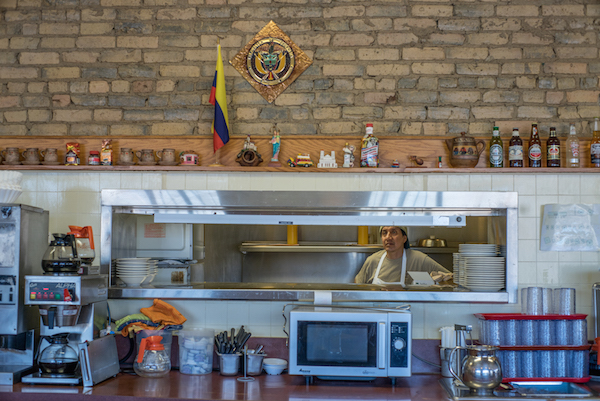
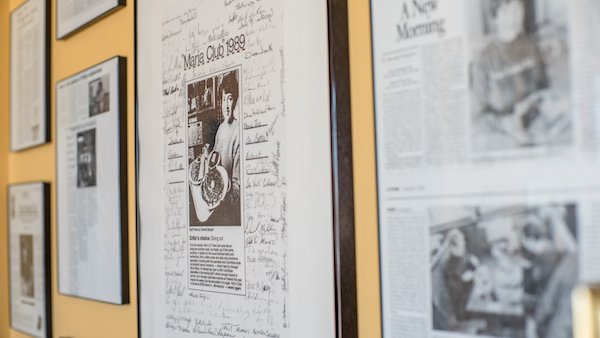
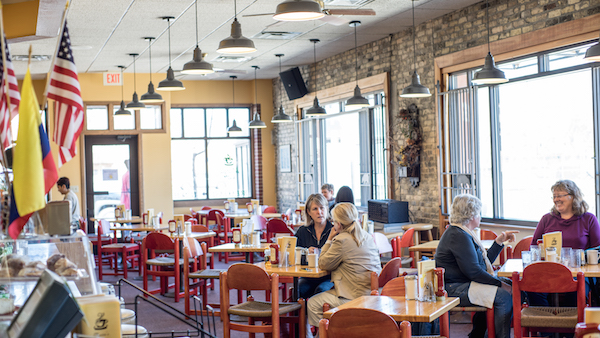
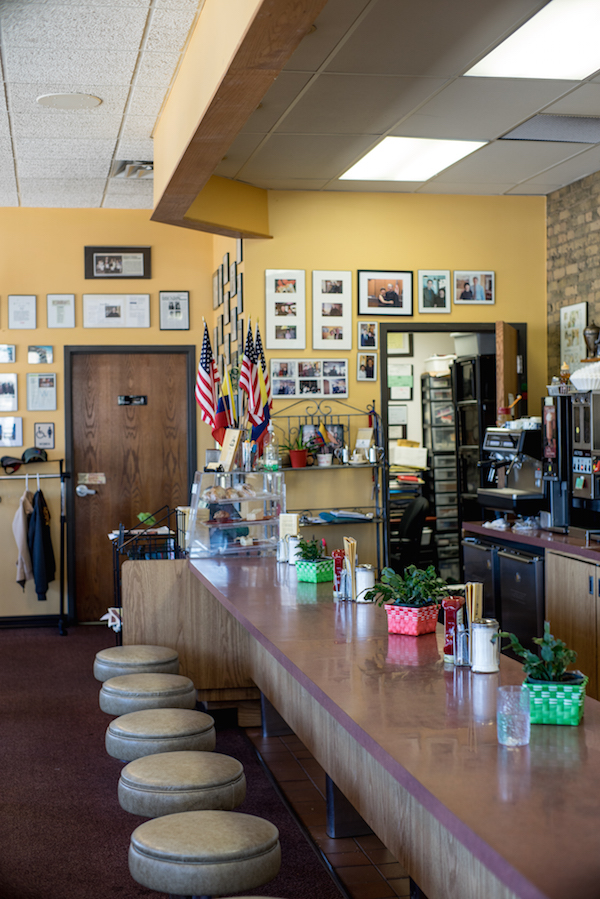
Roger Beck Florist
Website // 1110 E. Franklin Ave.
The smell hits you first when you open the door — it’s the wonderful aroma of dozens upon dozens of fresh flowers ready to be arranged in bouquets behind the counter. The corner shop is a colorful oasis in and amongst the brick buildings and urban landscape.
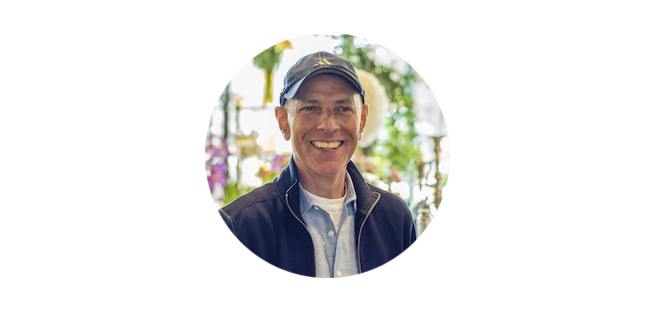
Roger Beck, Owner
What kind of community are you trying to build here?
“I wanted my business to be part of positive improvement for this neighborhood. Along with other businesses in this area, this business has been part of significant change which positively affects the people who live and work here.”
What are you most excited about in this community?
“I’ve always liked the diversity of this neighborhood. Having the flower shop here has brought people to this neighborhood who probably would not have ventured here. They see this neighborhood is not so different from other neighborhoods.”
